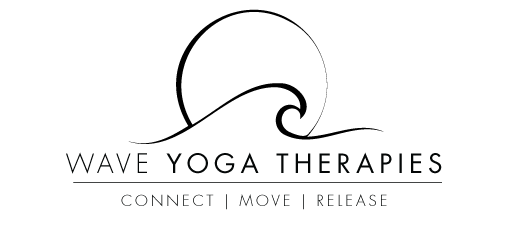Tales of Endurance

by Kieran Bell
•
8 November 2023
If you’re seeking a holistic approach to wellness and self-transformation, I offer a unique blend of one to one yoga practices that can help achieve your physical, mental, and emotional goals. With a special focus on trauma-informed yoga, my one to one sessions provide a safe and supportive space for healing and growth. Here is a quick rundown of what I offer and how it might help - as always, you are welcome to call me on 07557 506920 email me at info@waveyogatherapies.com - or message me on Instagram or Facebook to have a chat about your journey and how I can help. Trauma-Informed Wave Yoga Therapies My trauma-informed yoga classes are designed to help individuals dealing with past trauma, stress, or anxiety. These sessions provide a safe and supportive environment where you can explore yoga as a tool for healing. Trauma release yoga, which is suitable for beginners and experienced yogis alike, focuses on gentle movements and breathwork to release tension and promote emotional well-being, I offer this on a one to one basis in Darlington, Durham, Newcastle and surrounding areas - please contact me to book an initial consultation, where we can discuss the best path for you. I would advise booking a series of sessions (which I offer at a discounted rate) - from just £55 per hour One to one Yoga Sessions If you prefer a more personalised approach to your yoga path - I offer private yoga sessions that can include any practice you wish to purse. These sessions are tailored to your specific needs and goals, making it a perfect choice for those seeking personalised attention and guidance on their yoga journey, anyone looking to move toward yoga instructor qualifications or those who prefer a more tailored and personal approach to their practice. In addition those new to yoga have found taking a few one to one sessions helps builds confidence and strength, prior to regularly attending my group classes. Price start at just £35 per hour - Please click here to contact me and book - alternatively you are welcome to call me on 07557 506920, message me on Instagram or Facebook. One to one Vinyasa Flow For those looking for a transformative yoga session, I offer a personalised 60-minute Vinyasa flow session for just £35 for the (blocks of 4 sessions are discounted at just £125 - and you can choose the times of your Vinyasa to suit you!) Vinyasa yoga is a dynamic practice that combines breath and movement, helping you build strength, flexibility, and mental clarity in a short time. Please contact me for more information. Restorative Yoga and Yoga Nidra Restorative yoga focuses on deep relaxation and rejuvenation. Combined with Yoga Nidra, a guided meditation technique, these sessions help you find deep rest, reduce stress, and restore balance in your life. I work with many people who find having a personalised restorative yoga session very beneficial, as this can be tailored toward individual needs and goals - allowing them to be fully absorbed into the meditation and getting the most from this rejuvenating practice. Please contact me for more information. Contact me and book your one to one yoga session Embarking on your yoga journey is an exciting and transformative experience - and one to one tuition can really help you move forward and create balance in your life. Whether you’re new to yoga and unsure of where to begin - or a seasoned yogi looking to process further down your path - together we can find a way to deepen your connection, move and release. Contact me today and book your free one-to-one session and being your journey toward transformations and healing. You are welcome to call me on 07557 506920 email me at info@waveyogatherapies.com - or message me on Instagram or Facebook to have a chat about your journey and how I can help.

5 July 2023
As the heat rises, it's essential to adapt our yoga practice to stay balanced and energised. Hot weather can affect our bodies differently, so we need to change our usual routines. By practicing routines suitable for hot weather, we can harness the power of the sun and maintain our well-being. In this blog, we will explore the best yoga practices to help you stay cool, calm, and connected during the hot weather!

3 July 2023
Starting your yoga journey is a beautiful path, full of light - and an opportunity for self-discovery, self-care, and personal growth. By finding the right style, seeking guidance, creating a safe space, and honouring your body, you can embark on a fulfilling yoga journey, that will be with you always.

3 July 2023
Hot yoga, a practice that combines traditional yoga postures with a heated environment, has gained immense popularity in recent years. Practicing yoga in a heated room may seem daunting at first, but the benefits it offers make it an incredibly rewarding experience. In this blog, we will delve into the world of hot yoga and explore why it is such a good thing to incorporate into your wellness routine.

3 July 2023
Flow Dance Meditation: Uniting Mind, Body, and Spirit through Movement Introduction: In our quest for inner peace and connection, many turn to meditation to quiet the mind and cultivate a sense of serenity. However, traditional seated meditation is not the only path to mindfulness and self-discovery. Flow Dance Meditation offers a unique and dynamic approach, harnessing the power of movement to guide individuals on a transformative journey of self-exploration. In this blog, we will delve into the world of Flow Dance Meditation, exploring its essence, benefits, and how it can unlock a state of profound presence and blissful harmony. The Essence of Flow Dance Meditation: Flow Dance Meditation combines the fluidity and expression of dance with the mindfulness and introspection of meditation. It invites individuals to surrender to the rhythm of their bodies and allow movement to become a vehicle for self-discovery and self-expression. In this practice, dance becomes a form of meditation, facilitating a deep connection between mind, body, and spirit. Benefits of Flow Dance Meditation: Embodied Presence: Flow Dance Meditation invites individuals to be fully present in the moment, experiencing each movement with mindful awareness. By directing attention to the sensations of the body, the breath, and the music, dancers cultivate a heightened sense of embodiment, fostering a deeper connection with their physical selves. Emotional Release and Self-Expression: Dance has long been recognized as a powerful tool for emotional release and self-expression. Flow Dance Meditation harnesses this potential, providing a safe space for individuals to explore and express their emotions through movement. It offers a non-verbal means of communication, allowing dancers to tap into their authentic selves and release emotional blockages. Mindful Movement and Meditation: Flow Dance Meditation bridges the gap between movement and meditation. By merging the physicality of dance with the focused attention of meditation, it offers a unique pathway to cultivate mindfulness and inner stillness. Through rhythmic movement and intentional breathwork, dancers tap into a state of flow, transcending the limitations of the mind and entering a realm of pure presence. Stress Reduction and Well-being: Engaging in Flow Dance Meditation can have a profound impact on stress reduction and overall well-being. The rhythmic and repetitive movements, combined with the release of endorphins, promote a sense of relaxation and inner peace. This practice also enhances body awareness, improves posture, and boosts self-confidence, fostering a positive and empowered state of being. Connection and Community: Flow Dance Meditation can be practiced individually, but it also has the power to unite people in a shared experience. Participating in group sessions or dancing with others creates a sense of connection and community, promoting a deeper sense of belonging and support. Incorporating Flow Dance Meditation into Daily Life: Integrating Flow Dance Meditation into daily life extends the benefits beyond the practice itself. Consider the following suggestions to embrace the essence of dance and mindfulness in your daily routine: Set aside dedicated time for dance sessions or spontaneous movement exploration. Create a sacred space where you can dance freely and without judgment. Experiment with different styles of music to evoke different emotions and moods. Allow your body to guide the movement and trust in its innate wisdom. Practice conscious breathing, synchronising your breath with your movements. Conclusion: Flow Dance Meditation presents a vibrant and transformative path towards inner exploration and self-discovery. By integrating movement, mindfulness, and self-expression, dancers embark on a journey that unites mind, body, and spirit. Whether in solitude or in the company of others, Flow Dance Meditation offers an opportunity to transcend limitations, release emotions, and embrace the present moment with grace and joy. Step onto the dance floor, connect with the rhythm of your being, and let Flow Dance Meditation become a transformative practice that celebrates I offer Flow Dance Meditation as a group and one 2 one practice - I also offer this as an event activity, perfect for festivals, events and groups of friends and am regularly leading Flow Dance Meditation events around the UK - please contact me if you would like to know more.

3 July 2023
Emotional Freedom Techniques (EFT) offers a unique and powerful approach to addressing emotional challenges and promoting emotional freedom. By tapping into the body's energy system and combining it with focused attention on emotional issues, EFT empowers individuals to release negative emotions, reduce stress, and embark on a journey towards emotional well-being.

3 July 2023
Unleashing Healing Power: The Journey of Trauma Release Trauma, in its many forms, can have a profound impact on our lives, shaping our experiences and influencing our overall well-being. However, there is hope for healing and finding a path toward the light. In this blog, we will explore the concept of trauma release, its significance, and some effective techniques to facilitate the healing process. Understanding Trauma: Trauma can manifest as a result of various distressing experiences, including physical or emotional abuse, accidents, natural disasters, or the loss of a loved one. It can leave deep imprints on our minds and bodies, affecting our mental health, relationships, and overall quality of life. The Importance of Trauma Release: Suppressing or ignoring trauma can lead to prolonged suffering and can manifest in various ways, such as anxiety, depression, or physical symptoms. Trauma release is essential as it allows individuals to acknowledge their pain, process their experiences, and reclaim their lives. Techniques for Trauma Release: Wave Yoga Therapy and Counselling: Engaging in therapy or counselling can be immensely helpful for trauma release. Professional therapists provide a safe and supportive environment, guiding individuals through their trauma, helping them develop coping strategies, and facilitating emotional healing. Check out Mindfulness and Meditation: Practicing mindfulness and meditation can help individuals reconnect with their bodies and cultivate a sense of inner calm. By being fully present in the moment, one can observe their emotions and physical sensations without judgment, gradually releasing trauma's hold. Body-Oriented Approaches: Many trauma release techniques focus on the body, recognising that trauma is not only stored in the mind but also in physical sensations. Techniques like Somatic Experiencing, EMDR (Eye Movement Desensitisation and Reprocessing), and Trauma Release Exercises (TRE) are designed to release tension and restore balance to the nervous system. Expressive Therapies: (flow dance / embodied wave form Art therapy, music therapy, dance, and writing can provide alternative outlets for expressing and processing trauma. These creative modalities allow individuals to explore their emotions, thoughts, and experiences in non-verbal ways, fostering healing and self-discovery. Physical Activities: Engaging in physical activities like yoga, dance flow, or regular exercise can support trauma release. These practices promote the flow of energy, release tension, and create a sense of embodiment, aiding in the recovery process. Trauma release is a transformative journey that requires time, patience, and support. By acknowledging and working through our traumas, we can gradually release their grip on our lives, paving the way for healing and growth. Remember, seeking professional help and building a strong support system are crucial steps towards embracing a brighter future. Trauma release can lead to a renewed sense of self, empowering us to move forward and reclaim our lives.
I'm Here to Listen
Helping you on your yoga path is my top priority. Tell me what you're looking to get from your journey, and I can recommend the techniques, classes and events, that are right for you.
© 2025
All Rights Reserved | Wave Yoga Therapies



